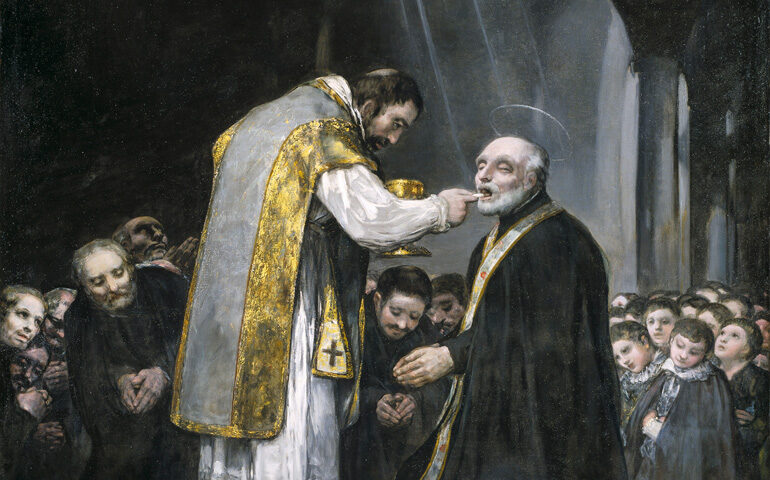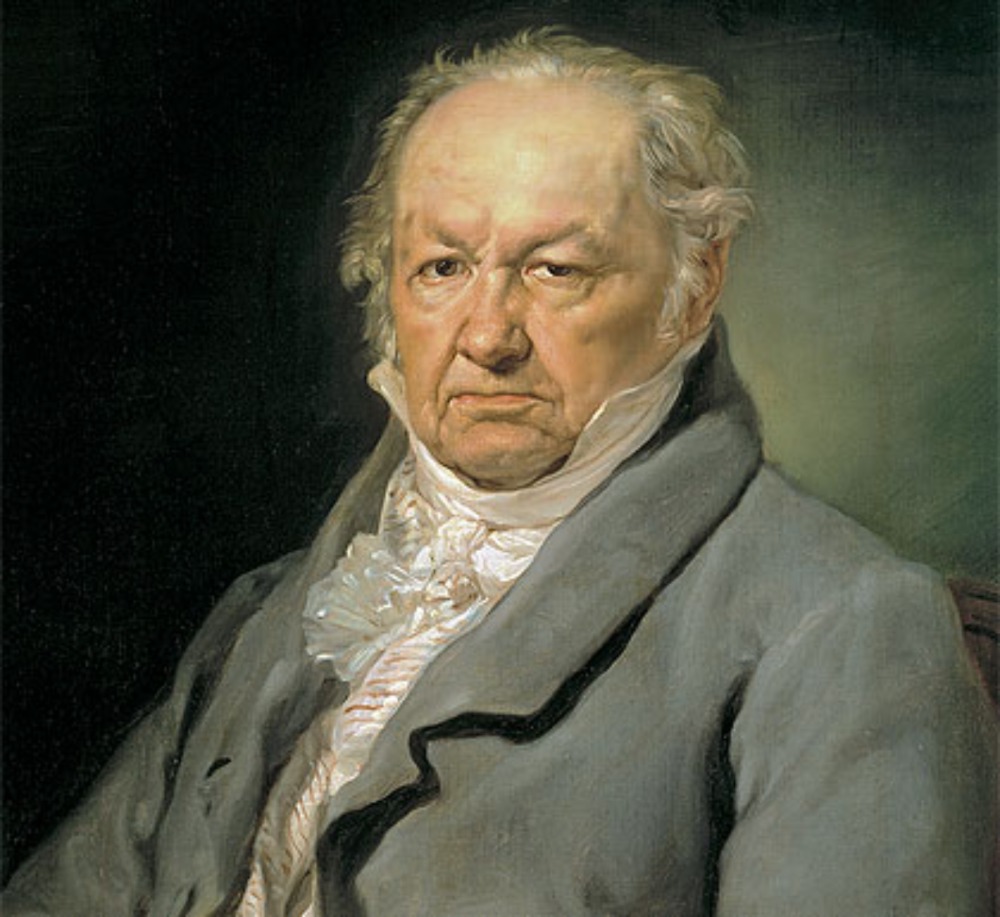
On display until the end of 2020 at Madrid's Prado Museumevokes an event that took place at the church The Roman church of St. Pantaleon on August 2, 1648. The 92-year-old Piarist founder, who is very much sick and will pass away at the end of that month.
In an oratory, very close to his room, Calasanz attended the Mass and receives the Communion. He was accompanied by several priests and students of the school. In reality, it was not the saint's last Communion, although it was the last in the company of his beloved students.
Among these priests and students, the experts have identified, in addition to a self-portrait of the painter, Camilo Goya, Francisco's brother and chaplain of Chinchón, and Mariano, the artist's grandson.

In this work a sharp contrast can be found, that of the cadaverous pallor of Calasanz's face with his fervent expression and gesture of recollection. The eyes are half-opened, but the image reflects the serenity of a believer.
It is the attitude of a great devotee of the Eucharist, which he considered health for the soul and the body, as reflected in a paragraph of his letter of January 18, 1631: "The body and the body, as reflected in a paragraph of his letter of January 18, 1631: "Keep in mind that all the virtue that medicines have is received from the hand of the Lord, who can and often does give more perfect health in Holy Communion than all the best medicines in the world.".
In addition, in a canvas in which dark tones -that announce the black paintings- prevail, it is worth mentioning that the Eucharist is a symbol of light, and the faces of both the celebrant, Father Vicente Berro, and those present have an unusual fervor. The children's features, which combine innocence and recollection at the same time, stand out especially.
This painting, with the Communion as a central theme, should serve not to undervalue Goya's religious work. If the artist defends the ideals of the Enlightenment and lashes out against inquisitors and a clergy mimicked with the political powerThe fact that they are not unbelievers does not imply that they are unbelievers. On the contrary, his religious works present a great originality, far from baroque theatrical effects.
However, the black view on Goya and religion endures.
I remember a TVE program, Mirar un cuadro, in which one of the interviewees said, perhaps without thinking too much about it, that the painting of the Piarist saint reflected the painter's religious doubts. Doubts or not, Goya stipulated with the Piarists the amount of 16,000 reales for a work done in less than three months. The painter received half in advance, but when he was to receive the rest, he only wanted to receive 1,200 and gave the remainder to the Piarists, along with a new painting, The prayer in the garden.
It could only be a gesture of gratitude from someone who must have been a Piarist student in Zaragoza, and who admired St. Joseph Calasanz, of whom one of his biographers tells that he heard in his inner self, walking through the streets of Romethis quotation from Psalm 10:14: "The helpless take refuge in you, you are the refuge of the orphan.".
In response, Calasanz created popular schools, being aware that the best gift that can be given to a child is the educationand its purpose was well expressed in the Piarist motto, Piety and Letters.
Antonio R. Rubio Plo
Degree in History and Law
International writer and analyst
@blogculturayfe / @arubioplo